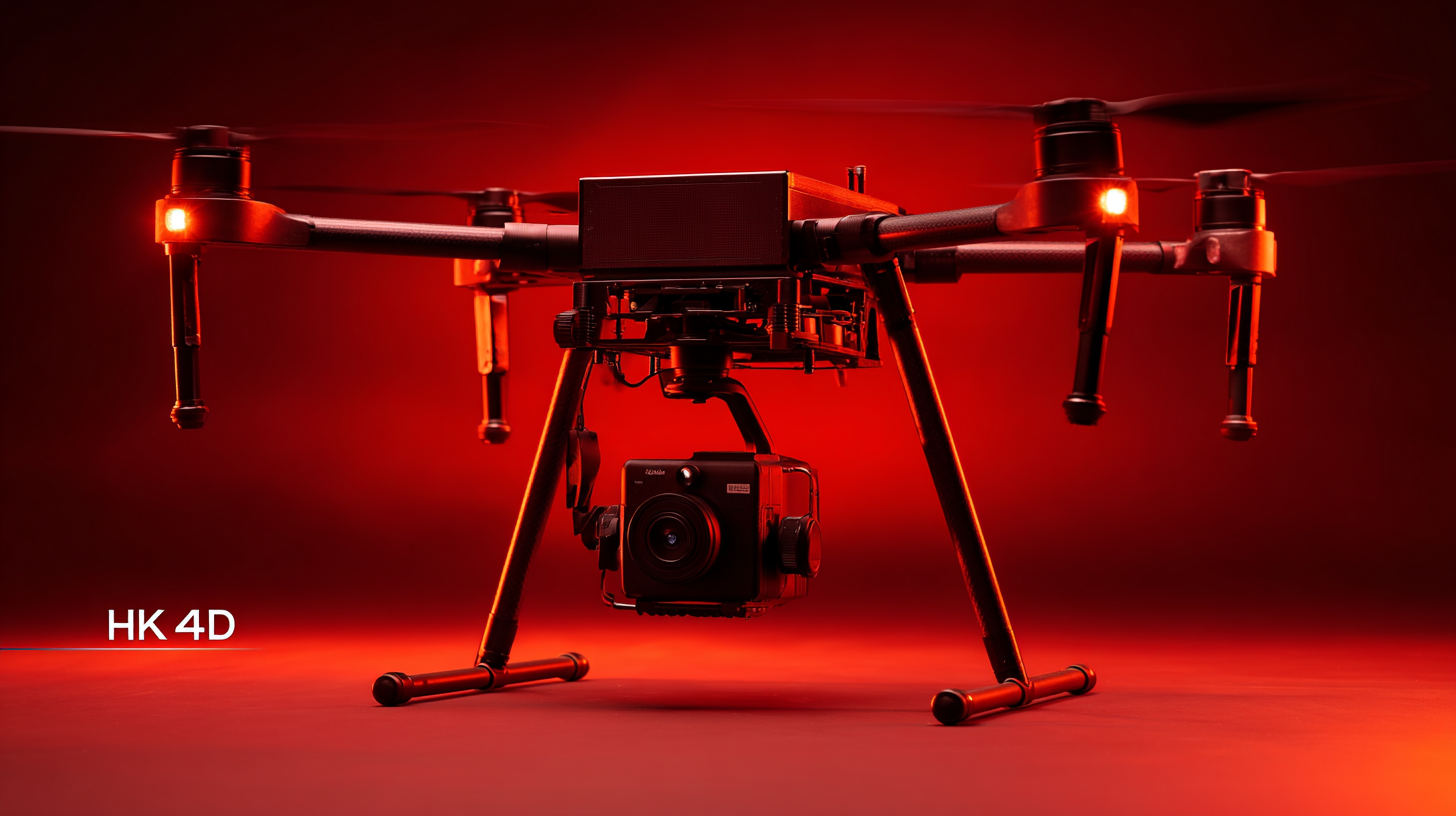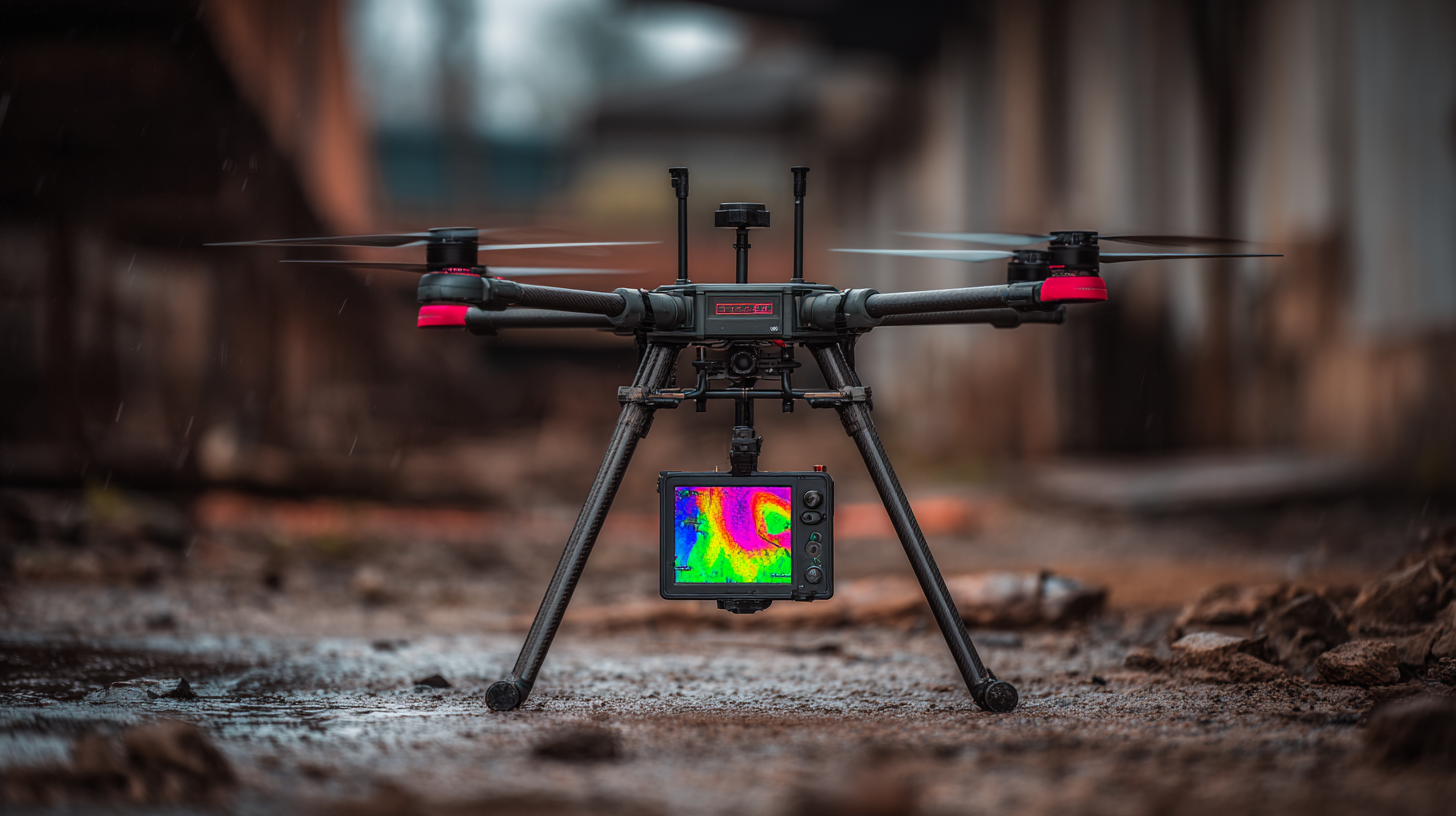Leave Your Message
As we approach 2025, the technological landscape of thermal imaging drones is set for a transformative evolution, driven by advancements in sensor technology, artificial intelligence, and data analytics. According to a recent market research report by MarketsandMarkets, the global thermal imaging market is projected to reach USD 8.3 billion by 2025, growing at a CAGR of 8.3%. This growth is being propelled by the increasing demand for thermal imaging drones in various sectors, including infrastructure inspection, agriculture, and public safety. As industries recognize the immense value of real-time thermal data, we can expect innovations in drone design and functionality that enhance operational efficiency and decision-making processes.

This blog will explore the key technological trends and advancements shaping the future of thermal imaging drones, providing insights into how these cutting-edge devices are poised to redefine various applications and industries.
 The rise of thermal imaging drones has revolutionized various industries across the globe, demonstrating their versatility and effectiveness in diverse applications. Initially utilized primarily in military operations, these drones have found new life in sectors such as agriculture, construction, search and rescue, and environmental monitoring. By providing unparalleled visibility in low-light and obscured conditions, thermal imaging technology enhances situational awareness and decision-making processes. This technological advancement has allowed professionals to conduct detailed inspections and assessments with unprecedented accuracy and efficiency.
The rise of thermal imaging drones has revolutionized various industries across the globe, demonstrating their versatility and effectiveness in diverse applications. Initially utilized primarily in military operations, these drones have found new life in sectors such as agriculture, construction, search and rescue, and environmental monitoring. By providing unparalleled visibility in low-light and obscured conditions, thermal imaging technology enhances situational awareness and decision-making processes. This technological advancement has allowed professionals to conduct detailed inspections and assessments with unprecedented accuracy and efficiency.
Globally, the demand for enhanced surveillance and monitoring capabilities has significantly accelerated the adoption of thermal imaging drones. In agriculture, farmers utilize these drones to monitor crop health and optimize irrigation practices, leading to improved yields and resource management. Similarly, in disaster management, thermal imaging drones enable rapid identification of heat signatures, facilitating quicker and more effective search and rescue missions. As this technology continues to evolve, we can expect even broader applications and revolutionary improvements in both performance and accessibility, making thermal imaging drones an invaluable tool in our rapidly changing world.
The evolution of thermal imaging technology in drones has been significantly influenced by several key features that enhance their performance and usability. One primary advancement is the integration of high-resolution thermal sensors, which allow for clearer and more detailed imagery. This improvement enables operators to accurately identify thermal signatures from greater distances, making these drones invaluable for applications such as search and rescue missions, wildlife monitoring, and infrastructure inspections.
Another driving factor is the incorporation of AI and machine learning algorithms, which improve the analytical capabilities of thermal imaging drones. These technologies facilitate real-time data processing, allowing operators to make informed decisions more swiftly. Additionally, the development of lightweight, durable materials has resulted in drones that are not only easy to transport but also capable of withstanding various environmental conditions. As a result of these cumulative advancements, the versatility and effectiveness of thermal imaging drones continue to expand, paving the way for more innovative applications in the future.
The rise of drone technology, particularly in thermal imaging, has propelled China to the forefront of the aerospace manufacturing industry. According to a recent report from the International Drone Association, China accounted for approximately 70% of the global drone market in 2022. This dominance is largely attributed to its robust manufacturing capabilities and continuous innovation in technology. Chinese companies are not only leading in quantity but also in quality, producing drones that incorporate advanced thermal imaging sensors suitable for various applications, from surveillance to search and rescue missions.
Moreover, a study by Markets and Markets suggests that the thermal imaging drone market is projected to grow from $2.23 billion in 2021 to $5.71 billion by 2026, with an annual growth rate of 20.9%. This expansion is heavily influenced by the contributions of Chinese manufacturers who are investing significantly in research and development. Companies like DJI and XAG are not only pushing the boundaries of what's possible with thermal imaging technology but are also setting new standards for efficiency and accessibility in drone production. As a result, the future of drone technology is increasingly intertwined with the advancements being made in Chinese manufacturing, shaping a new landscape for the industry worldwide.
| Drone Model | Camera Resolution (MP) | Max Range (km) | Flight Time (mins) | Weight (kg) |
|---|---|---|---|---|
| Model A | 30 | 8 | 40 | 1.5 |
| Model B | 20 | 10 | 35 | 2.0 |
| Model C | 24 | 12 | 50 | 1.8 |
| Model D | 16 | 15 | 30 | 1.2 |
The evolution of thermal imaging technology has significantly enhanced the capabilities of drones, transforming various fields, including firefighting and agriculture. Recent developments show that IoT-enabled firefighting drones can provide real-time imaging while extinguishing fires, which not only increases the efficiency of fire suppression but also enhances safety for ground personnel. These drones are outfitted with advanced thermal sensors that detect heat signatures, allowing for more precise targeting of flames and quicker identification of hotspots, ultimately reducing the risk to firefighters in high-stakes environments.

In agriculture, the integration of thermal imaging with AI-powered drones is revolutionizing crop monitoring. These drones are utilized to gather critical data on plant health, soil moisture, and pest infestations, providing farmers with unprecedented insights. The precision offered by thermal sensors helps in assessing crop stress levels early, enabling timely interventions that can lead to bountiful harvests. As innovations in thermal sensor technologies continue to emerge, the potential applications for drones expand, promising further improvements in efficiency and effectiveness across various sectors.
Thermal imaging drones have revolutionized various industries by providing real-time thermal data that enhances decision-making processes. As reported by MarketsandMarkets, the thermal imaging market is projected to reach $6.4 billion by 2025, driven largely by increasing applications in sectors such as agriculture, construction, and public safety. For instance, in agriculture, farmers utilize thermal imaging drones to monitor crop health, detect irrigation issues, and optimize resource utilization, ultimately leading to increased yields and reduced waste.
When integrating thermal imaging drones into operational workflows, there are several tips to consider for maximizing efficiency. First, understanding the specific thermal characteristics relevant to your industry can help you calibrate your drones more effectively. In construction, for example, utilizing drones equipped with thermal cameras can identify heat loss in buildings and locate electrical faults, significantly enhancing maintenance efforts. Second, ensure compliance with local regulations regarding drone operations to avoid penalties and ensure safe usage in populated areas.
In public safety sectors, thermal imaging drones serve as critical tools in search and rescue operations, offering improved visibility in low-light environments. Studies indicate that drones can expedite search efforts, often reducing the time taken to locate missing persons by up to 70%. By embracing thermal imaging technology, industries can harness the power of drone applications to drive innovation and improve outcomes.
